Old fruit smothered in bruises, fuzzy green and white mold, and a spattering of fruit flies usually indicates rot and disgust, but artist Kathleen Ryan is redefining the significance of rotting fruit. Her “Bad Fruit” sculptures, most recently debuted in the Fracois Ghebaly gallery in the greater Los Angeles area, are a representation of the innate beauty and life of decay.
Kathleen Ryan is currently based in New York City, and focuses entirely on meticulous sculptures. Her current work is primarily focused around creating large sculptures that look like rotting fruit. The pieces are made from polystyrene foam, cut to the fruit shape, and then decorated with individual gemstones held up by stainless steel pins to bring the rotten fruit to life. On average, a 30 inch wide lemon can take up to two months to properly decorate and finish with around 10,000 beads.
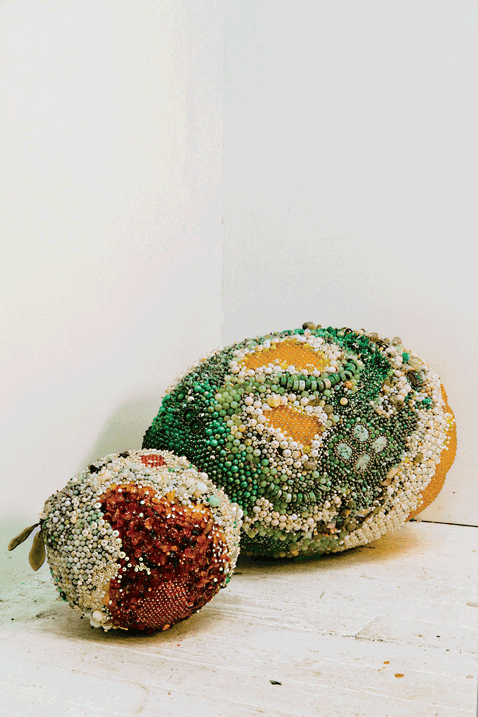
Two months for only one sculpture seems excessive, but that time is not just for decoration, it also includes planning. Some artists spend weeks backpacking through the woods or doing intense research on the topic they are focusing on to gain inspiration for their work. Kathleen Ryan has a similar practice, but hers is right in her New York City apartment; Ryan watches fruit rot. “A SWARM OF fruit flies has gathered in Kathleen Ryan’s Manhattan studio, which seems appropriate given the mound of oversize, decaying lemons and oranges”. Rather than look up reference photos on Google or read books about rotting fruit, Ryan watches the natural process unfold before her eyes. She records the process of the decaying fruit by evaluating the colors and textures that occur in the fruit’s lifespan.
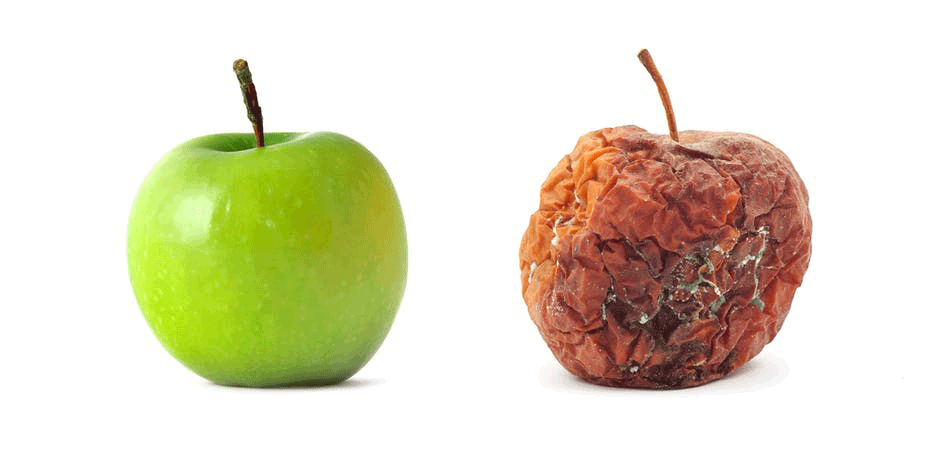
After watching a fruit’s transformation, Ryan paints the polystyrene foam shape to differentiate between the areas that will be fresh and the areas that will be rotten. She then chooses semi-precious gemstones (turned into beads) to correspond with the painted area’s color and texture. For instance, if the area features bumpy mold, then the beads there will be larger so they protrude past the other spots. For areas of the fruit that contain a white mold commonly seen on rotting fruit called aspergillus niger, Ryan may use lighter gemstones like quartz or calcite.
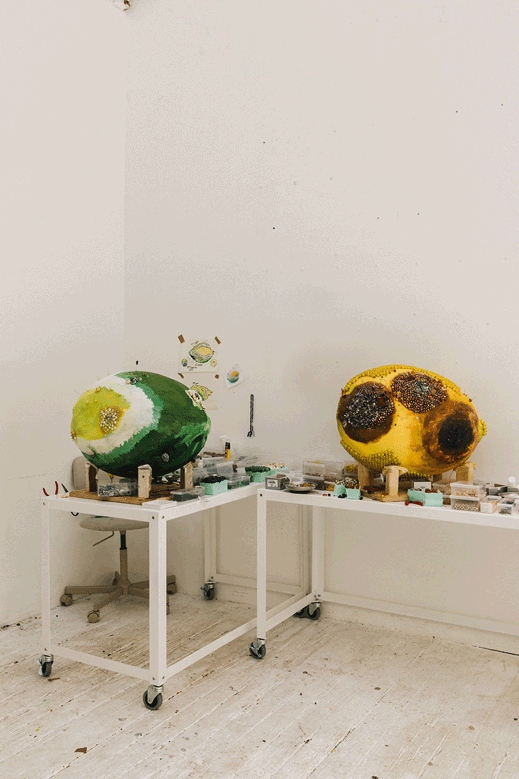
Kathleen Ryan’s technique may remind some of a classic craft called sequining. This craft is typically used to make homemade ornaments or unique animal sculptures. A sequin is placed on a small pin with a tiny head; the pin is then inserted in the styrofoam shape. Designs like stripes and swirls are common on the spheres, but many opt for a simple splash of color all around. Compared to this craft, one will really understand how long and intricate Ryan’s process for these ambitious sculptures is.
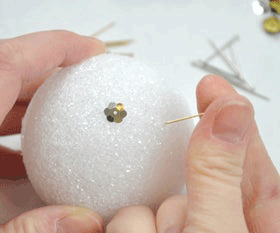
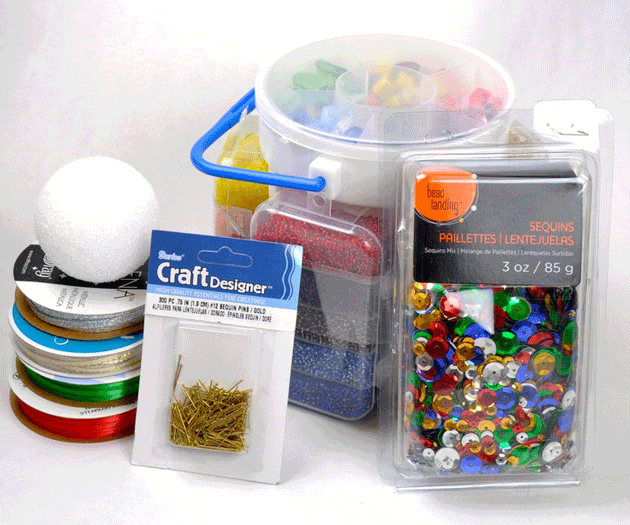
Bad Grapes (2020) is one of the Kathleen Ryan sculptures that was exhibited at the Francois Ghabaly gallery from February to March 2020. The massive sculpture measures at 151 x 228.5 x 137 cm or 59.5 x 90 x 54 inches and is composed of 25 types of semi-precious gemstones and 6 multimedia elements.
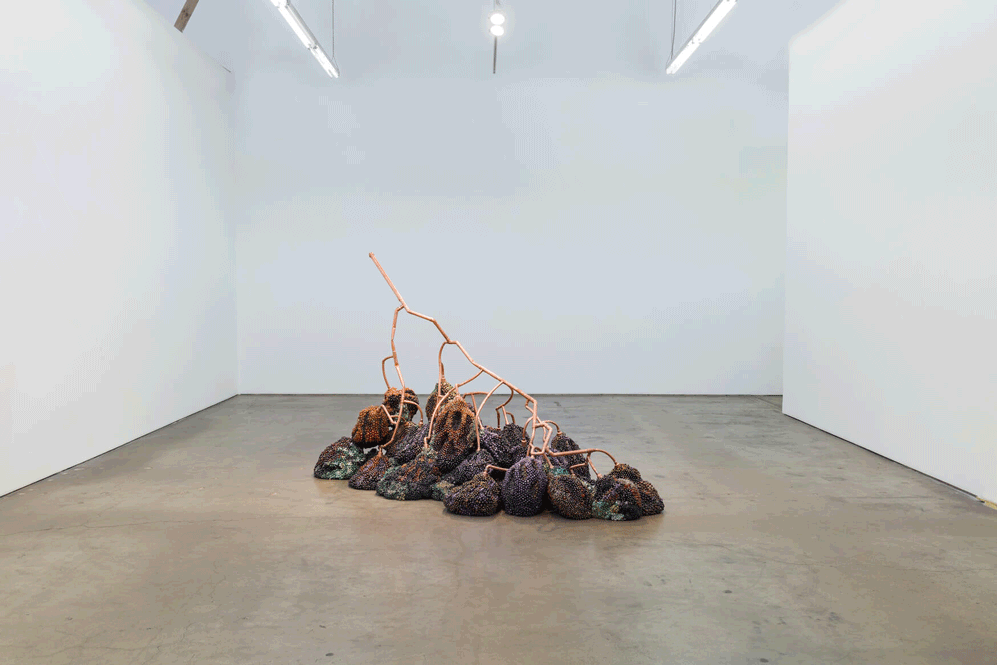
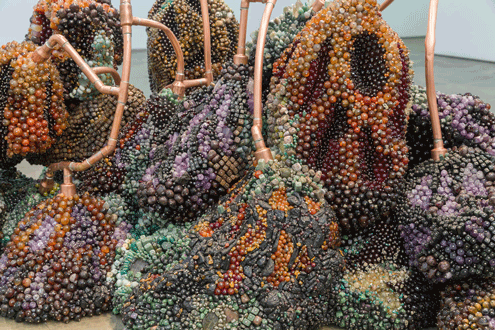
When seen from a distance, the viewer may feel unsettled by the image of rotting fruit, and in fact, Ryan expects viewers to experience some variation of displeasure when interacting with her work. In an interview with the New York Times, Ryan noted, “They’re not just opulent, there’s an inherent sense of decline built into them...which is also something that’s happening in the world: The economy is inflating, but so is wealth inequality, all at the expense of the environment.” Kathleen Ryan wants viewers to feel the rot past just the fruit in front of them.
However, when one looks closer at the pieces, the gemstones begin to become individual parts of the art work, separate from the whole. The beads used to depict the fresh part of the fruit are typically everyday, manufactured glass beads; whereas, the rotten areas feature naturally occurring gemstones, bringing depth and beauty to the mold. In the same interview, Ryan states, “‘Though the mold is the decay...it’s the most alive part”’.
To see more of Kathleen Ryan’s work and her unique process, check out her personal website and Instagram page below:
https://www.kathleen-ryan.com/
